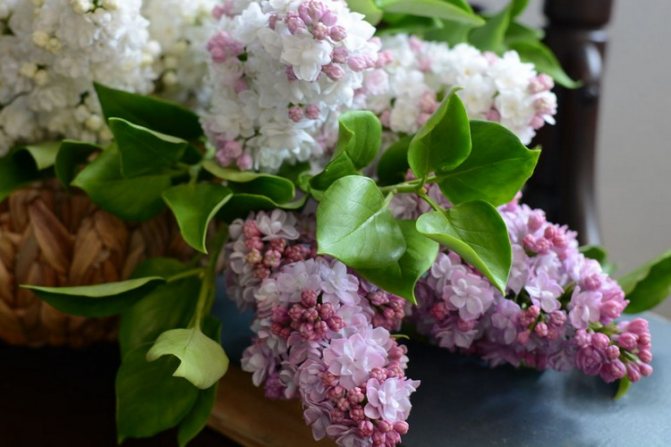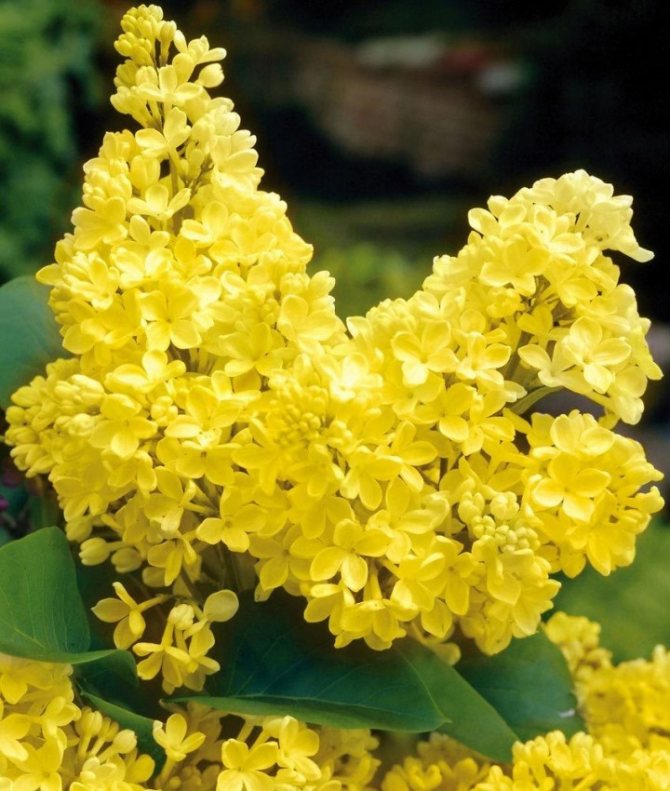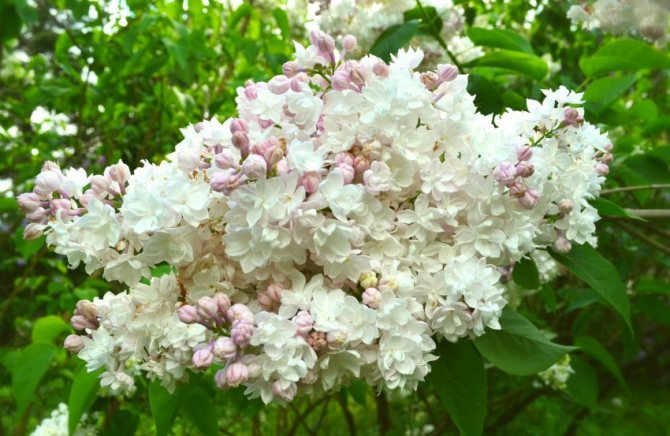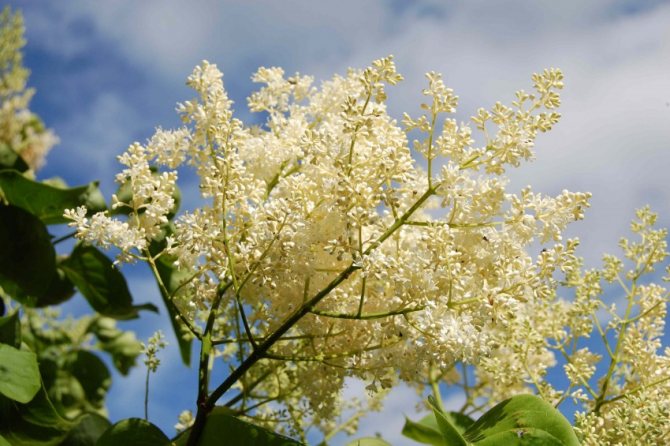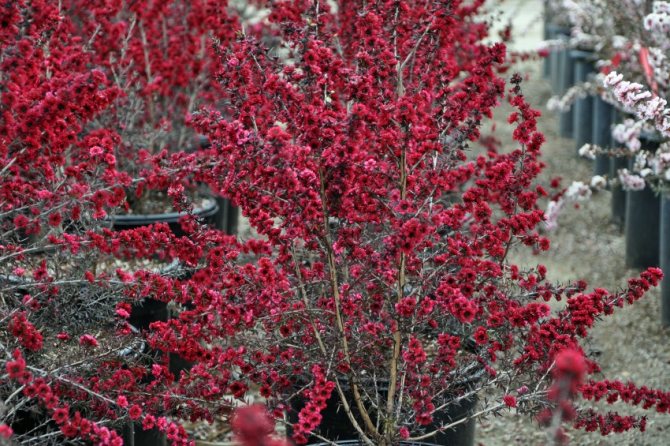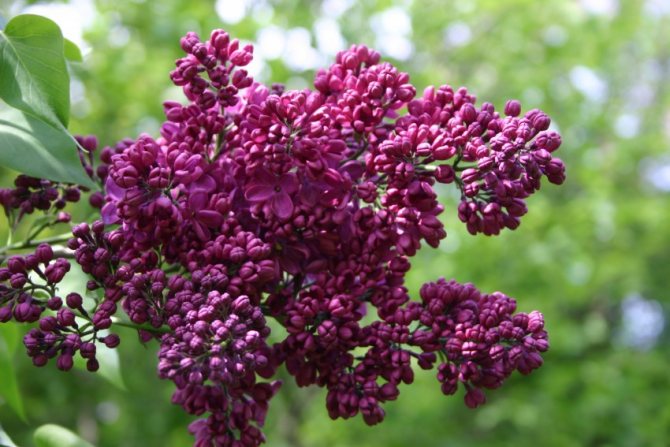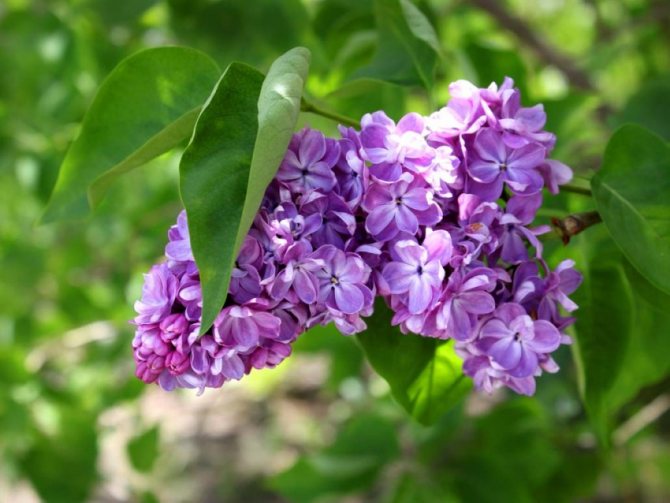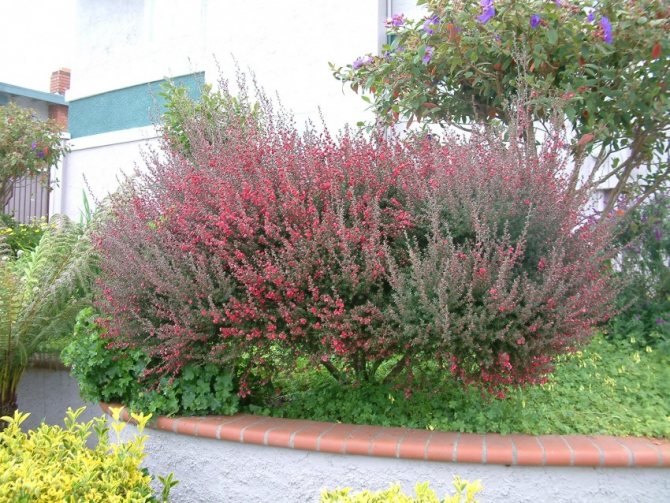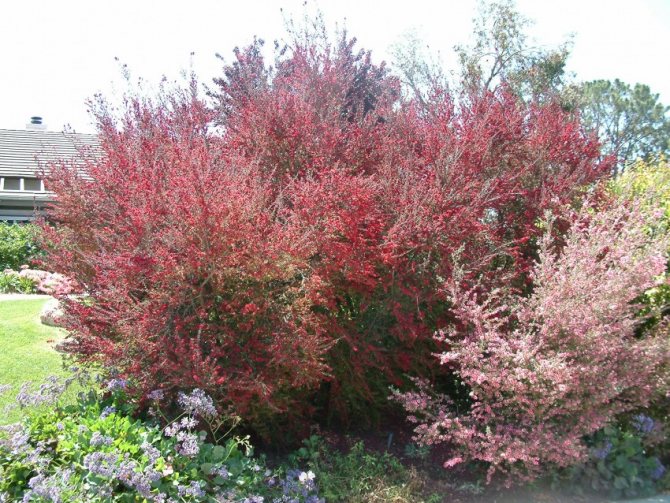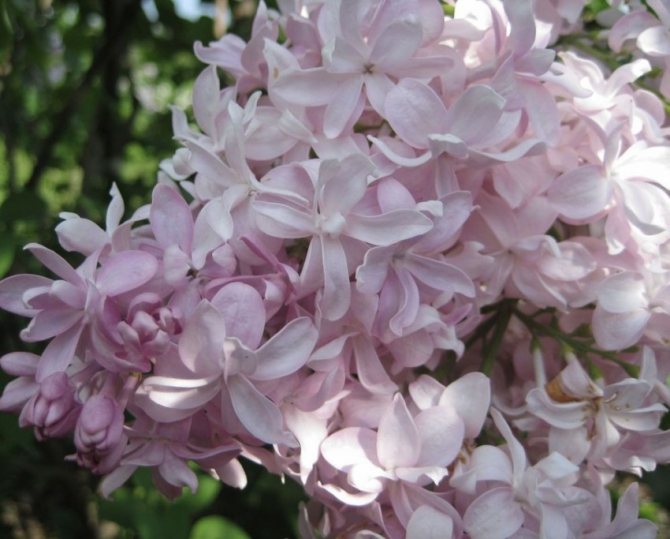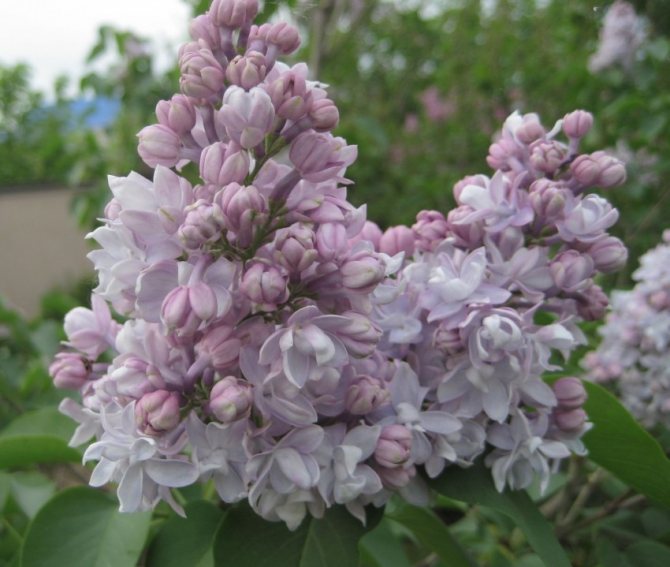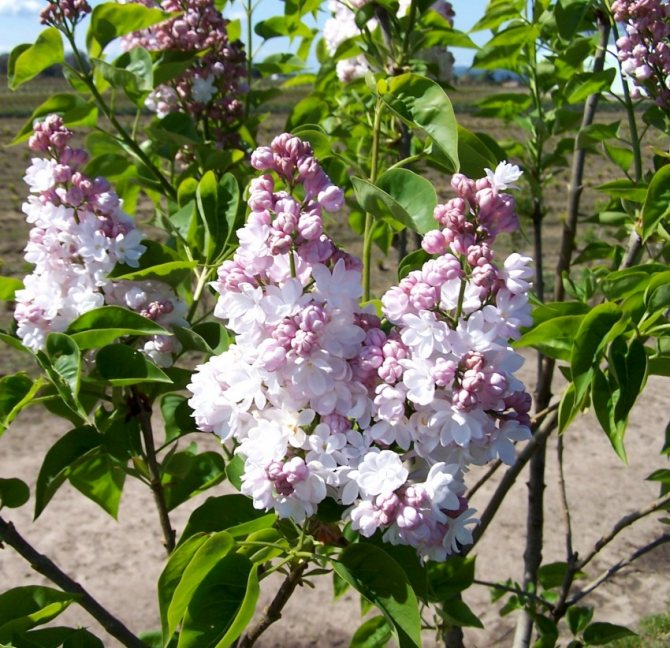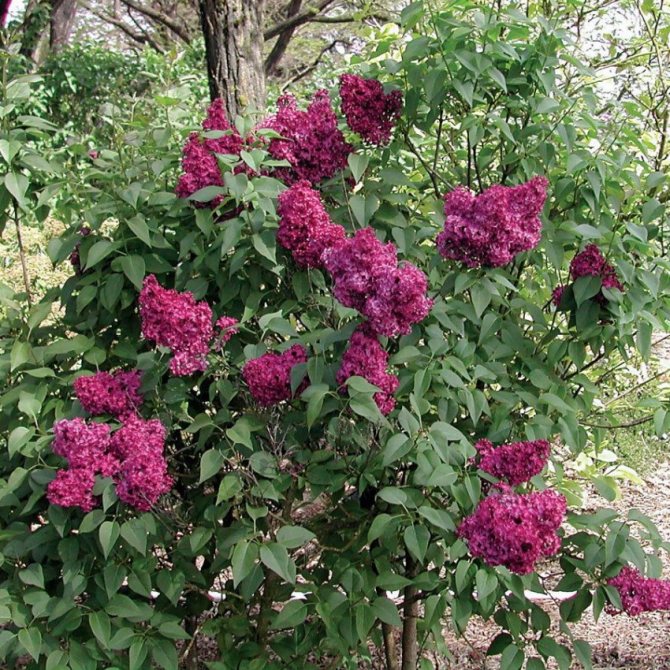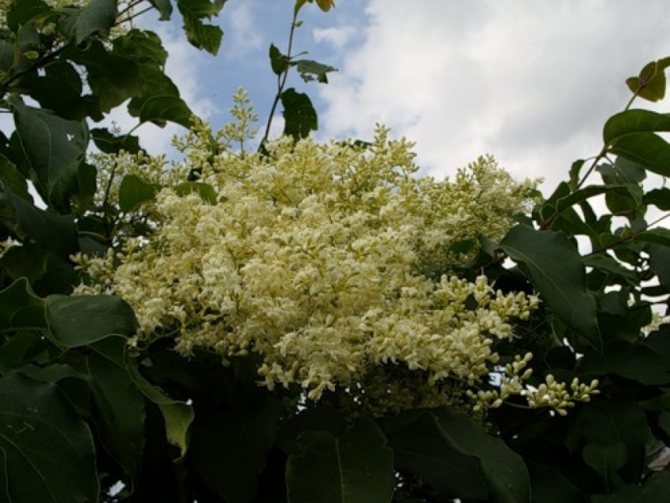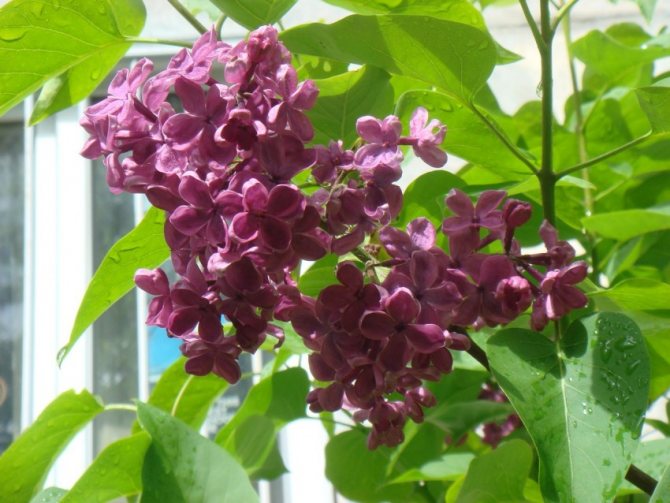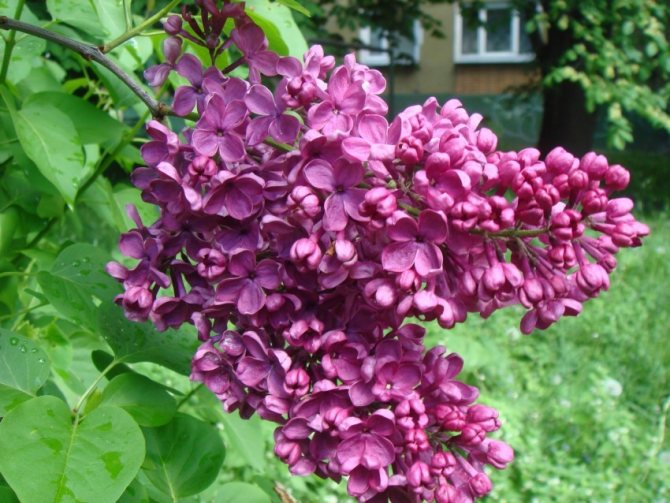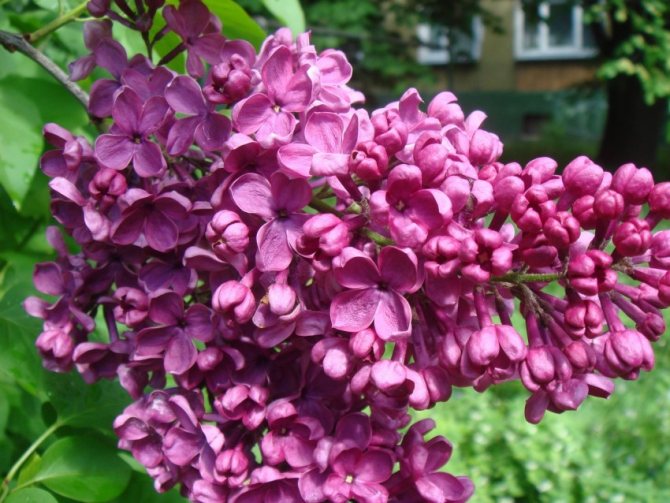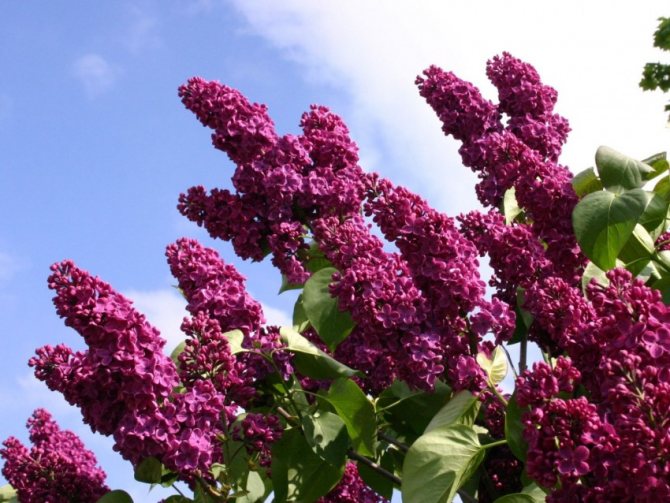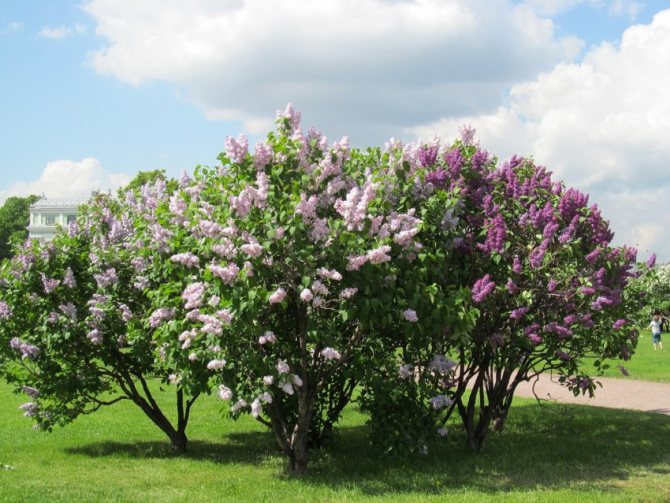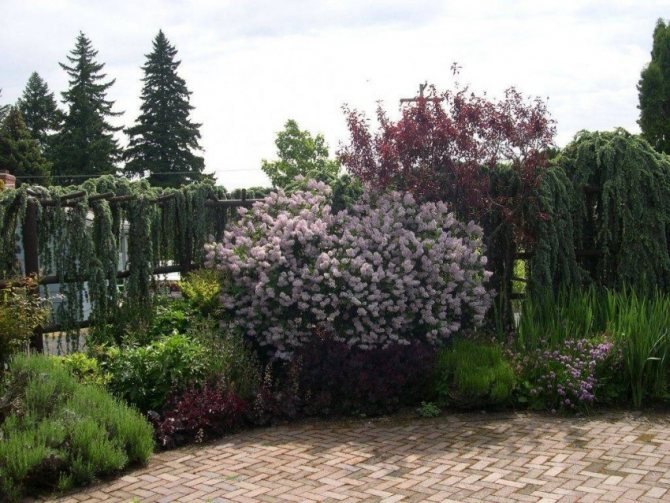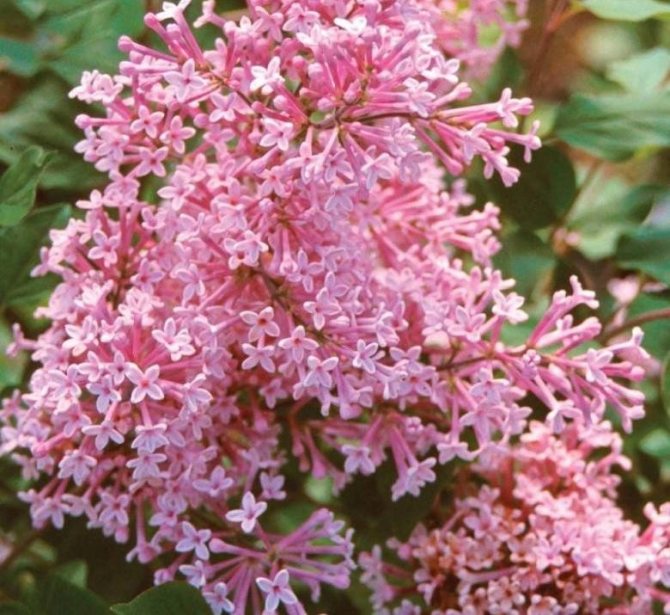If you ask any amateur summer resident which tree is most suitable for planting on the site, he will answer without hesitation that it is lilac. And, for good reason, this tree is the most popular summer cottage plant, because it has a lot of advantages. Not only that, it has a very beautiful flowering, delicate, pleasant aroma, but it is also of great benefit. Lilac leaves serve as a wonderful filter from dust, and the number of dust particles retained by them is several times greater than that of poplar or linden.
Lilac terry planting
Most often, cultivars of terry lilac are purchased in the form of seedlings. If you buy a lilac with a closed root system (the roots are planted in a container with soil), then there will be fewer problems when planting. When buying planting material with open roots, you need to thoroughly check them. The root system should be well developed, without visible painful changes. Seedlings with open roots need more attention, as they will be more whimsical to changing weather conditions. And also when choosing bushes for planting, check the condition of the bush branches, visually determining their viability and the healthy color of the bark.
1. Planting and transplanting of lilac bushes is usually carried out in August or early September (subject to a warm autumn). Although lilacs and a frost-resistant plant do not require additional protection from winter cold (such as sheltering or dusting), the seedlings need to take root before the onset of frost. If the transplant was not possible before the onset of subzero temperatures, then this can be done in the spring, until the buds swell on the branches. Otherwise, the plant will most likely not take root.
2. For planting, a bright and dry place (not a lowland), without winds and unnecessary drafts, is chosen in the garden and park area. When planting a "green wall", the seedlings must be separated from each other at some distance so that the bushes can subsequently grow. A hole for a seedling is made about 0.5 m in diameter, and the depth of the hole should be such that the roots fit, and the lower branches on the branches (the root collar of the plant) were located 2-3 cm above ground level, this will exclude the appearance of other shoots in the spring.
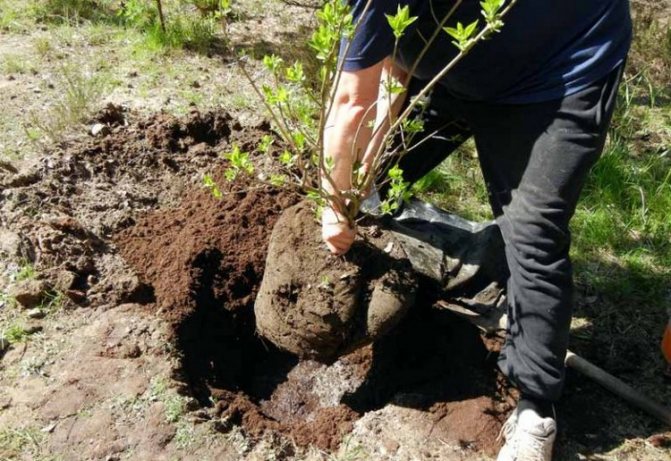
Amur lilac: description
Amur lilac is a deciduous, multi-stemmed shrub that can grow up to 10 meters in height. It has a beautiful spreading crown. She becomes especially attractive when she is shaped. After planting in the first year, the "crackling" (Amur) lilac develops rather slowly and almost does not form young shoots. All the forces of the seedling are aimed at creating the root system. In the beginning, it is not deep. In the second or third year, the roots go deep into the soil. Gradually, growth becomes more active, and by the age of 10, a small bush turns into a very beautiful tree-bush.
Adult lilac trunks are hard and durable. They reach 30 cm in diameter. They are covered with dark gray bark. The wood is white and very heavy. Young shoots are reddish-brown in color and slightly resemble cherry branches. They are often used as fuel. When burning, they crackle violently, sparks scatter several meters.
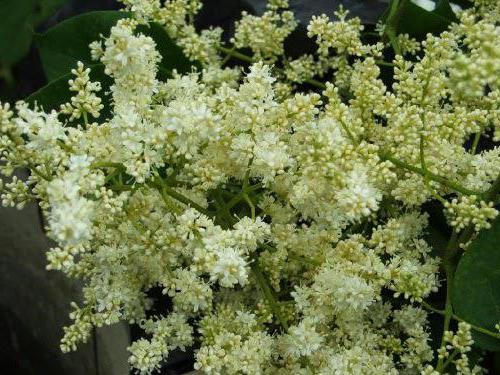

Amur lilac, the photo of which you see in our article, has leaves that are no different in color and shape from those of other representatives of the Lilac genus.They are also painted in a dark green color, differing in the correct elliptical shape. The leaves are large, up to 11 cm long.
As you know, common lilac does not change the color of foliage in autumn. In contrast, the Amur lilac, a photo and description of which can now be found in all publications for gardeners, is painted in different colors in the fall. At this time, it is unusually beautiful, the leaves can have a purple or golden-orange hue. In addition, this type of lilac differs from the usual garden plant in terms of flowering. "Crackle" begins to bloom at the end of June and pleases with its buds for three weeks.
Amur lilac flowers are small - no more than six millimeters in diameter. They consist of four petals and distinctly prominent stamens. Flowers are collected in rather large panicle inflorescences. They appear at the ends of young shoots in large numbers and literally envelop the entire shrub. They are painted cream or more often white, have a pleasant delicate aroma - this is how they attract pollinators and are an excellent honey plant for them.
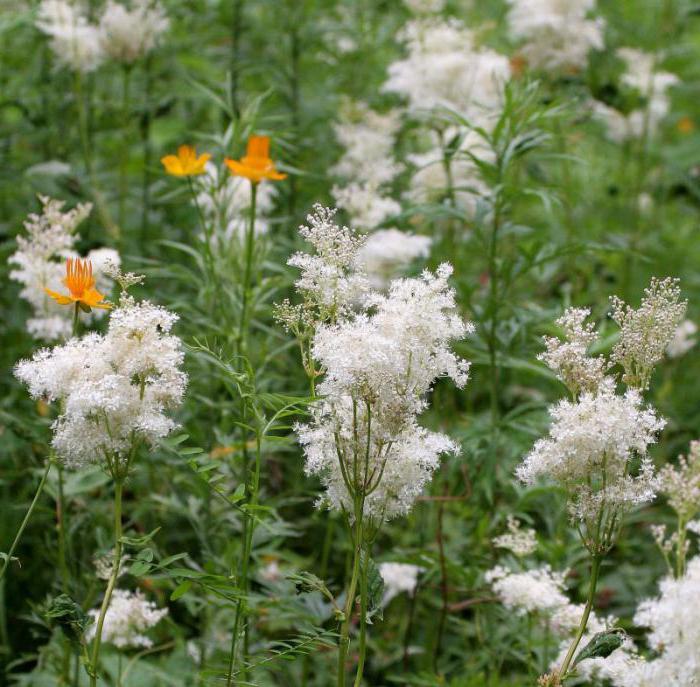

The Amur lilac has no fruit. Inside the buds that have already bloomed, seeds appear that can be planted and get new seedlings. In order for the flowering to be more abundant in the next season, dry panicles must be removed. They can be used as a remedy for making water-based decoctions and alcoholic tinctures, which are very effective in treating certain skin conditions.
Lilac terry care
Many varieties of lilacs do not like the abundance of moisture, so the groundwater at the planting site should lie at a depth of one and a half meters, not higher. Abundant watering is necessary only during the planting itself, and then - a moderate sparing regime. It is necessary to ensure that the soil is not clayey and acidic, otherwise it will be necessary to extinguish the soil with dolomite flour. Every 3 years, the plant needs mineral fertilizing.
How to prune lilacs? On the main healthy shoots, as soon as the snow melts and warm weather sets in, primary pruning is performed, while leaving 7-8 healthy buds, cut off the rest without flinching. So the bush will not waste its vitality in vain. You also need to remove any old, damaged, dried or diseased branches. Everything is done with a sharp instrument to minimize damage.
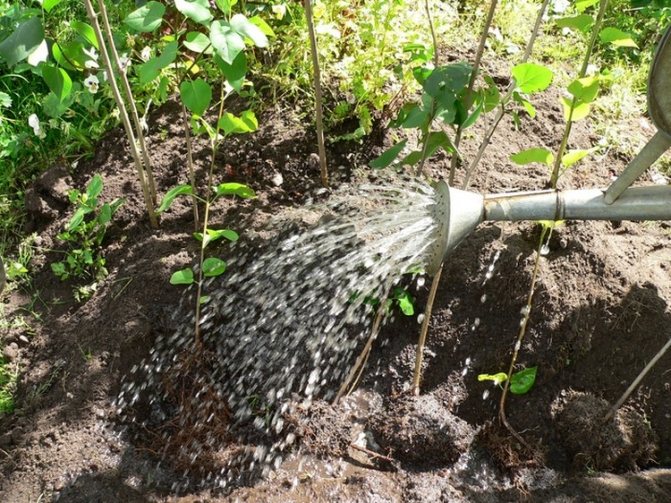

During the flowering time of lilacs, do not be afraid to cut out the fragrant inflorescences in half, this will only benefit them. You can cut off fragrant inflorescences and put in a vase or make a gift to friends or loved ones, you can do more than half, it will not hurt in any way.
The bush is easy to plant, it is unpretentious to care for. For care, the lilac will delight with its lush magnificent inflorescences in the garden, and in the park, and in a bouquet on the table.
Amur lilac "Sudarushka"
This variety is very popular with gardeners. It is a multi-stemmed shrub with a spreading dense crown. It reaches a height of ten meters. They can be from 5 to 11 cm long. When the leaves are just blooming, they have a purple-greenish color, in summer they change their color to dark green, while the underside remains lighter.
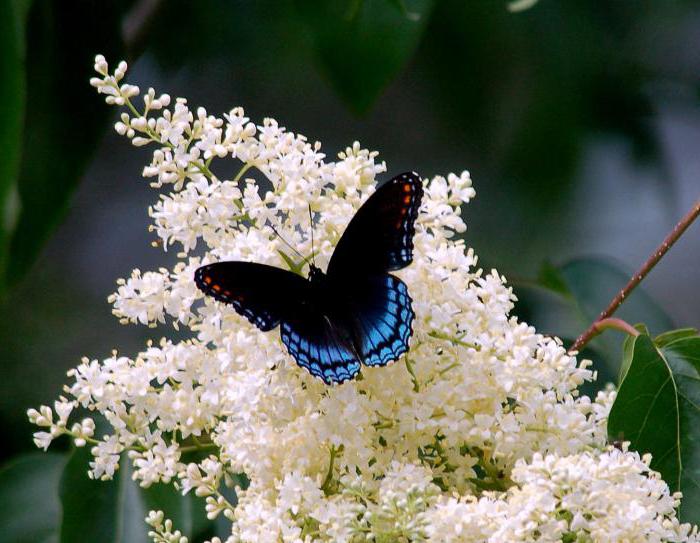

The flowers are small, creamy or pure white, with a strong honey aroma. They are located on short pedicels in the form of wide, large, paniculate inflorescences. "Sudarushka" blooms profusely for twenty days.
Yellow miracle - lilac
So far, experts have bred the only variety with unusual yellow inflorescences - this is "Primrose". This variety was awarded a certificate in 1949 by the Royal Society of Dutch Gardeners and Botanists.
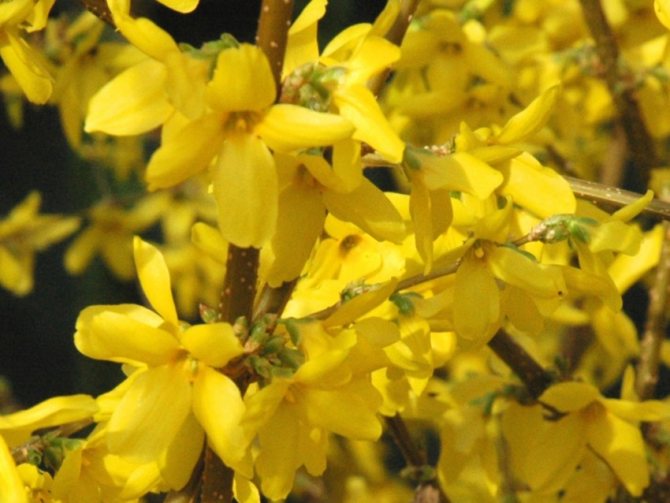

A sprawling chic bush can reach up to 3.5 m, each year an increase of up to 30 cm.
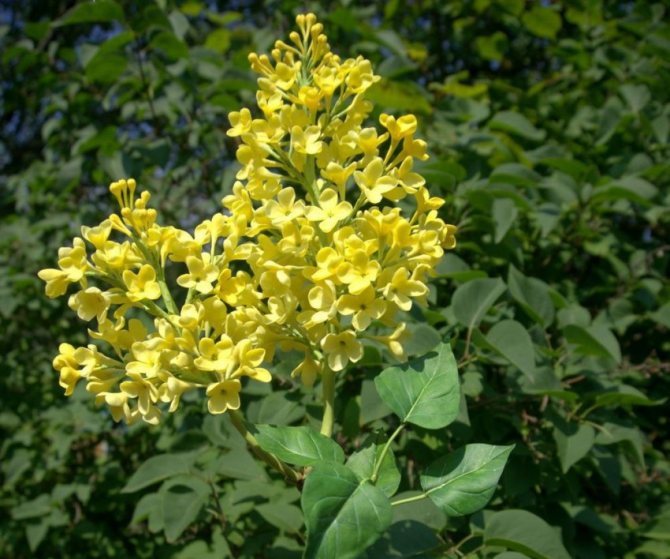

Leaves with hearts up to 10 cm of saturated green shade with gloss. Blooming lilac first has round buds, light green color.
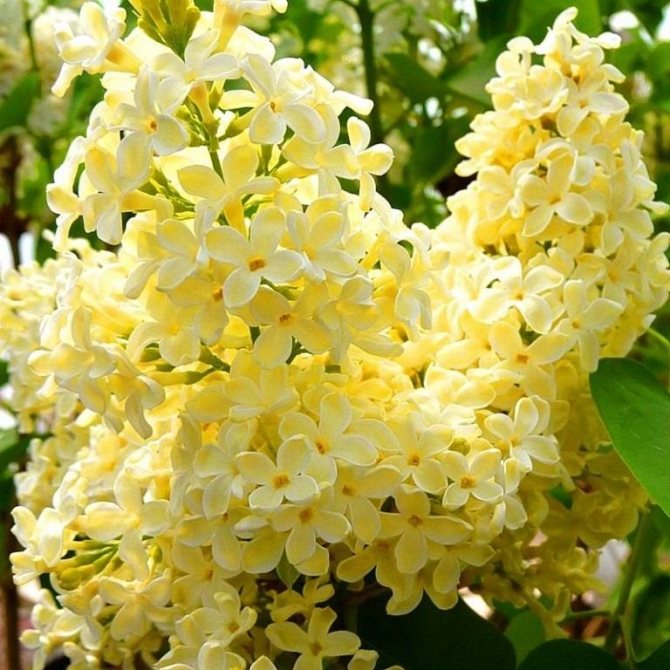

Numerous flowers are collected in yellow inflorescences with a panicle (up to 20 cm).If the sun is scorching, they will fade to a white hue.
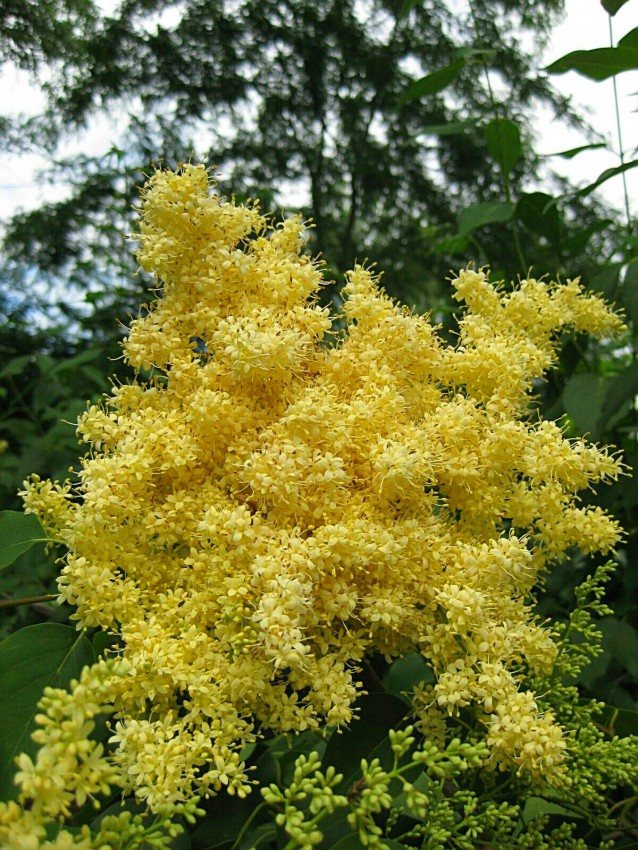

How to grow
Lilac loves light, but easily tolerates partial shade. She is able to withstand severe frosts. It is best to plant it in moist loamy soil. Does not like stagnant water, as well as acidic soil.
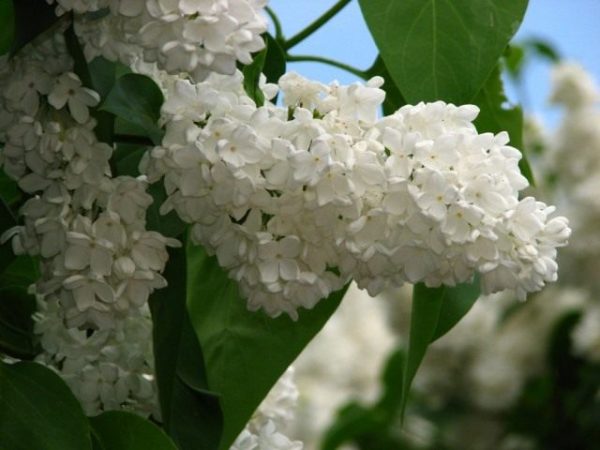

It is better to plant in a sunny place, use a fertile, moist soil with a drainage layer. Also, lilacs are often cut off, giving faded inflorescences, this allows you to give it a decorative look. It is also recommended to remove unnecessary root growth.
If properly cared for, lilacs can live for over 100 years. Earlier in England there were bushes that lived for 180 years. They reached 9 meters in height, and the root was 25 cm wide.
But in our climate, growing such a large plant will not work. But all the same, small bushes grow very well, there are no difficulties with growing.
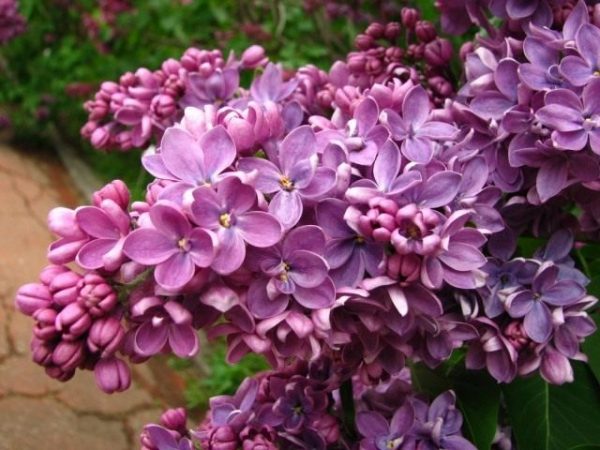

Note! The most durable lilac is ordinary. Thoroughbred and varietal are not as durable.
Gorgeous daylilies
But there is a partner for lilacs and a much larger one - magnificent daylilies (Hemerocallis). They bloom much later than the main shrub, but they glow and shine under the lilac, as if creating two additional "levels" - a lush turf of narrow and bright leaves and floating inflorescences.
Daylilies keep lilacs from getting boring for the rest of the season. And the effect of horizontal stripes or tiers creates additional optical illusions in the compositions.
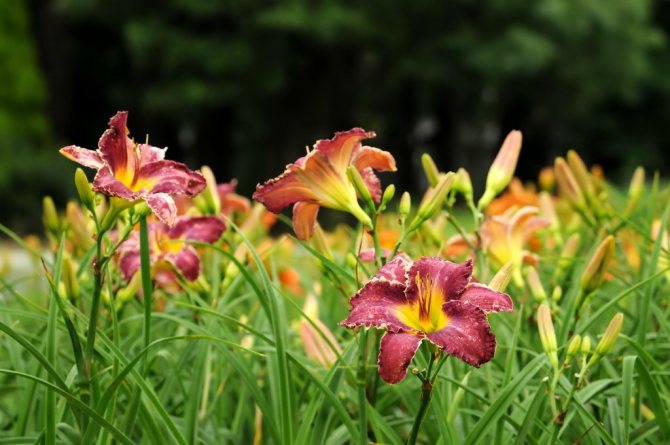

Daylilies. <>
Diseases and pests of lilac
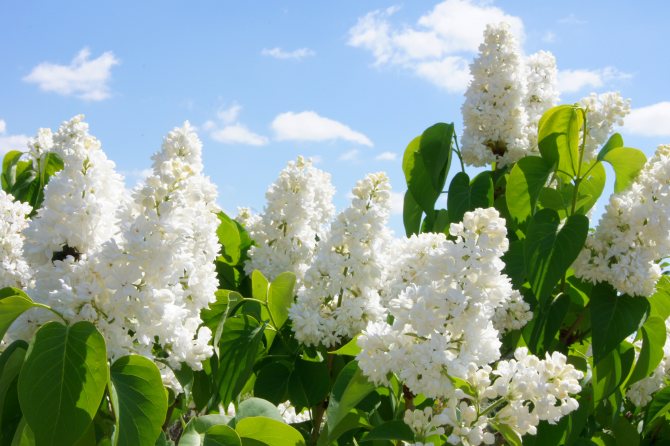

Almost all plants are susceptible to pests and diseases, including lilacs. However, with the right approach, many of these problems can be prevented. So, in particular, lilacs very often attack bacterial rot. You can cope with it by spraying with non-concentrated copper oxychloride. This should be done on the 9-10th day when the first signs of the disease are detected. Lilacs can catch late blight of the kidneys. To solve this problem, spraying the bush with Bordeaux liquid is used. Also, the moth moth sometimes attacks the lilac bushes, which can be got rid of with the help of chlorophos or a rotor. Among the pests of lilacs, there is also a lilac hawk moth. If it is seen on a bush, then it should, as soon as possible, be treated with 0.1% phtolophos.
Lively host
If you are looking for a more spectacular partner, suitable not only for natural style, but also for regular gardens, then it is worth remembering the Hosta's ability to get along with any shrubs. Choosing compact varieties, the main advantage of which is not flowering, but leaves, you will create an ornamental pattern under the lilacs or place structuring accents. And the very luxurious foliage of the hosts with different color effects looks great in any setting.


Hosta and lilac.
Where to buy seedlings
You can buy shrub saplings both at the nursery and gardening centers, and order through the mail.
| Sapling height | Where can one buy | Price | About the cattery |
| 30-40 cm | Kennel Savvateevs (Moscow region, Tula, Belgorod) | 350 rubles | The nursery is adapted to the conditions of central Russia. The variety is not indicated. |
| 20-60 cm | Internet store "Lesodar" | 300 rubles | The company is engaged in the professional cultivation and sale of coniferous and deciduous trees and shrubs. The seedling variety is not indicated. |
| 120-180 cm | TO Agronomist (Novosibirsk) | 740 rubles | The company is dedicated to the professional cultivation and sale of seedlings, and also provides landscape design services. The seedling variety is not indicated. |
How to make the garden actively develop?
Bush care
Caring for lilacs in the garden is quite simple:
- During the growing season, the trunk circles are loosened to a depth of 10 cm at least four times.
- In the first half of summer, we water the bushes abundantly, providing the amount of water necessary for the growth of young shoots.
Advice! From mid-July, the amount of watering must be reduced, otherwise there is a risk of awakening young flower buds.
- In early spring and then several more times with an interval of 3-4 weeks, we carry out mineral fertilizing: 50 grams of urea or 80 grams of ammonium nitrate per plant (in total).


We use fertilizers with a high nitrogen content for feeding
- We apply organic fertilizers before winter at the rate of about 15 kg of humus per bush.
Pruning
To ensure a friendly and active flowering, as well as good growth, the bushes need to be pruned periodically.
The plant usually tolerates this procedure without negative consequences, but nevertheless, some rules should be followed:
- In the first two to three years after disembarkation, we carry out only sanitary and thinning processing. It is advisable not to cut off young shoots so as not to slow down the growth rate.
- In the third year, we choose up to six branches, which will form the base of the bush, and remove the rest, less tall.
- Next, we cut out all the internal branches, and shorten those growing outward after the third or fourth bud.
- It is better to remove up to a third of all inflorescences from a profusely flowering bush. So the rest will turn out to be denser and more durable.
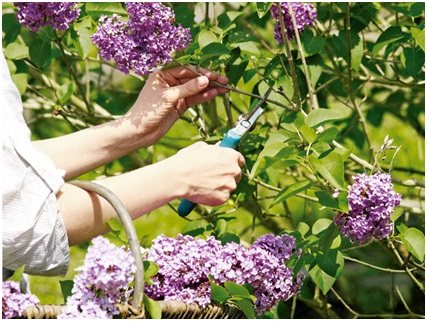

Some of the inflorescences can be removed until the flowers fully open.
- It is also mandatory to cut the root growth: even if you plan to breed lilacs, you should leave no more than two or three young shoots per bush.
Soil requirements
Although lilac is undemanding to the soil, it still, like any other plant, loves fertile soil. It is advisable to choose a site for this shrub with a neutral or slightly acidic soil, with a low standing of groundwater. In an alkaline environment, lilacs grow poorly, but if there is no choice, it is necessary to fill the dug hole with organic fertilizers, for example, compost or humus, before planting.
Lilac does not tolerate stagnant water, therefore it is advised to do drainage on heavy soil. To do this, it is enough to pour stones or broken bricks on the bottom of the planting pit.
Rooting young shoots
In this case, the apical young shoots of an adult bush are used for seedlings. For shoots 15-20 cm long, the lower leaves are removed, the sections are treated with a growth stimulator, then they are planted in the ground in a permanent place in the garden, deepening into the soil to the level of the buds.
Seedlings are watered and covered with foil.
After two weeks, when they are rooted, the cover is removed and the plants are tended as usual. For the winter period, the seedlings are covered with a layer of peat, fallen leaves or spruce branches 5 cm thick to protect them from freezing.
Group boarding
Groups with monochromatic flowers are very effective. On a light background or in sunny places, varieties with a dark color look better. If it is planned to plant several groups of lilacs on the lawn (preferably three), then each of them should consist of two or three plants of the same variety. Otherwise, the impression of variegation is created. Moreover, they should all bloom at the same time. Groups of small varieties are beautiful (for example, the low-growing variety Shkolnitsa (Syringa Shkolnitsa) and the medium-sized variety - Beauty of Moscow (Syringa vulgaris Beauty of Moscow) .These lilacs also look good in the foreground in front of tall lilacs (Flora (Syringa vulgaris Flora), Ludwig Shpet ( (Syringa vulgaris Andenken an Ludwig Spath)) In group plantings, beautifully flowering herbaceous or shrub perennials are also used for a stronger colorful effect. Example:
lilac (Syringa) and tree peonies. Both species have flowers of the same color - white, lilac pink. They coincide well in flowering time, which significantly increases the colorfulness of the entire composition. Lilacs in the dominant amount, peonies in addition.
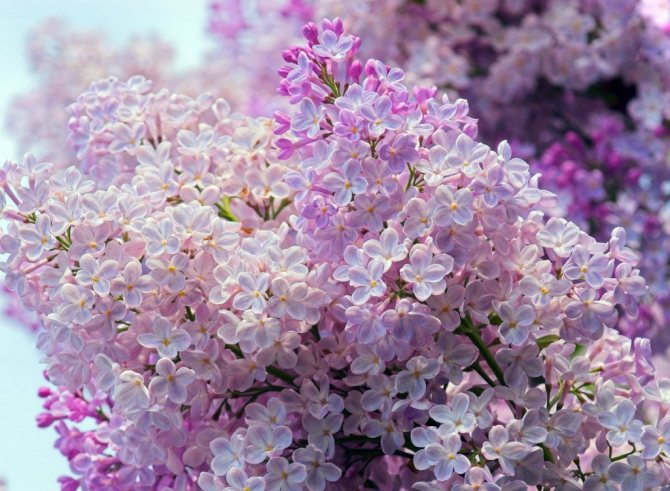

The image shows the flowers of common lilac
The composition of different varieties of lilacs in combination with the VanGutta spirea (Spiraea vanhouttei), which covers the trunks of tall lilac bushes with its flexible branches and creates a second tier of flowering, is especially decorative. White flowers of spirea serve as a good background, emphasizing the decorative effect of lilac inflorescences of various colors. This composition is stable over time, well retains the given shape with a total flowering duration of a month.
When selecting other types of spirits, especially from the summer-flowering group, the total duration of flowering can be up to 2 months or more. Lilacs are attractive not only during the flowering period. Its dark green leaves adorn the bush until late autumn and fall off only after severe frosts.
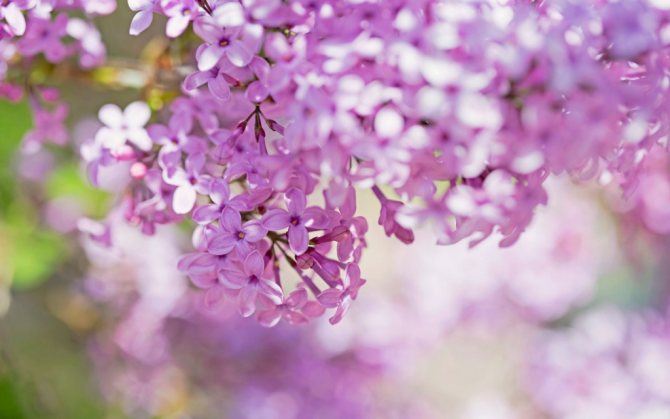

In the photo there are lilac panicles during the flowering period
Groups of lilacs on the lawn should not be brought closer to the paths, but they also should not be taken too far. In the first case, the group is perceived in parts, and not as a whole, in the second, against the general background, its decorative qualities are lost.
To avoid shading in monocultural groups of lilacs (solitary plantings on the lawn, hedges), the illumination is regulated by the planting scheme (usually the distance between plants is 3.5-4 m). Standard plants are placed according to a 3x3 m scheme. Each plant in a group, especially a standard plant, must be expressive. Our experienced specialists will help you compose compositions of varieties of the most diverse colors from sky blue to dark purple, from white to ink purple. The collection of the Yuzhny nursery includes the best varieties of lilacs from legendary collectors Kolesnikov and Lemoine.
Professional agronomists of the Yuzhny plant nursery are ready to share with you the nuances of planting and growing lilacs to create your own unique garden, hedges, tell you about your favorite plant fertilizers, which you can later purchase in our Garden Products store. Ornamental Crops Nursery "Yuzhny" is a full range of services for your garden on a turnkey basis, from planting plants to seasonal care for them.
Herbaceous peonies
They feel good under the lilacs, or rather, along the outer edge of their near-trunk circles, and herbaceous peonies (Paeonia). Like daylilies, they tolerate partial shade well. Large and massive inflorescences of peonies conceal the space and make the lilac itself visually less massive.
Glowing effectively against the background of lilac trunks and greenery, herbaceous peonies balance the influence of large shrubs and compensate for its volumes, as if they are taking over the baton and continue to bring classical motifs and watercolors to the compositions.
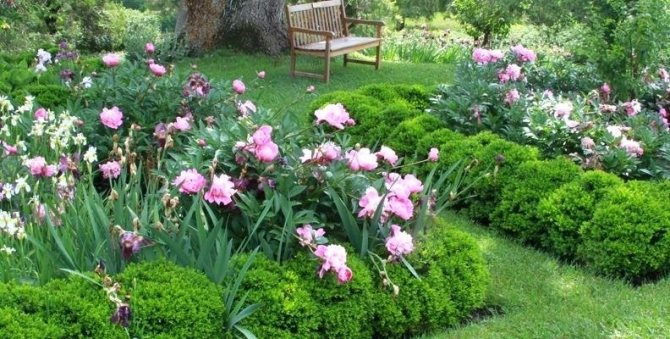

Herbaceous peonies. <>
Watering
In early summer, the plant needs abundant watering - about 30 liters per 1 square meter. If at this time the amount of precipitation is moderate, then you can slightly reduce watering. By the end of summer and autumn, the bushes do not require watering, only if there is a drought.
It is equally important not to overmoisten the soil. Excessive watering can cause early bud development in spring or freezing of young shoots in winter. In the first year after planting, Amur lilacs are watered no further than the planting pit, and then the irrigated area is increased.
If there is a constant strong wind in your area, then watering can be increased. Moisture should saturate the soil by at least 40 cm. If lilac grows near the highway, in spring and summer you should wash its leaves from dirt and dust with a jet of water.
How Chinese lilacs reproduce
There are several ways to propagate a bush using:
- Seeds;
- Layers;
- Grafts;
- Cherenkov.
Gardeners rarely use seeds for propagation, because fruits are not always available. For better germination, it is necessary to carry out stratification - keep the seed in moist sand in the refrigerator for 2 months. In early spring, it can be planted in a box with soil to a depth of no more than 1.5 cm.Seeds can sprout in 2 weeks or after a few months. Seedlings dive 2 weeks after they sprout. It is important that the air and soil are well warmed up, it is then that the time comes to transfer the seedlings to the site.
One of the common breeding methods is Chinese lilac layering. In the spring, an annual shoot is tied with copper wire in two places: at the base and at a distance of 80 cm from it. The bark cannot be damaged. The branch should be laid in a groove near the bush, sprinkled with earth (except for the top). As soon as the new shoots reach a height of 15 - 17 cm, they are spud. In the fall, the layers are separated from the bush.
In the spring, gardeners also quite often plant the bush - this is the second common breeding method. Cuttings are prepared in early spring and kept in the refrigerator until grafting. The graft is wrapped in a bag. It is removed after the kidneys begin to swell.
Advice! Annual stems of common or Hungarian lilac are suitable as a stock.
It is not very easy to propagate Chinese lilacs using cuttings, because they do not take root well. For this purpose, young shoots (preferably annual) are suitable, which are cut directly during flowering or after. The cuttings are rooted in a greenhouse in a calcined soil of peat and sand. It is important to cover the shoots. After about 2 months, the cutting will take root, and in spring the plant can be planted on the site.
Reproduction
Amur lilacs are propagated in several ways:
- seeds;
- cuttings;
- layering;
- vaccination.
Seeds can be harvested in late autumn in wet weather. The pods are then dried at room temperature for several days. To stratify the seeds, they are mixed with moist fine sand in a 1: 3 ratio and left in any container that has holes for water to drain. It should be kept in a cool room (no more than +5 degrees). Experienced gardeners use the bottom shelf of the refrigerator for this purpose.
Heychera and Heycherell
Among the best decorative deciduous perennials suitable for decorating flower beds with lilacs and filling the trunk circle, one can safely name geyher (Heuchera), and heykherell (hybrids × Heucherella). With velvety carved leaves and varied greens, metallic effects and multicolored spots and veins, these spectacular plants create a luxe backdrop. And in the company of such a giant as lilacs, they seem almost precious.
These are the best candidates for foreground and planting in mixed compositions, contrasting beautifully with other perennials and allowing lilac compositions to be more stylistically expressive.


Heicher. <>
Delicate tulips
If you are looking for a beautifully flowering plant that blooms before, during and after the lilac bloom, creates beautifully flowering accents and allows you to play on colors almost indefinitely, then the perfect spring choice is tulips (Tulipa).
The bright flowers of these bulbous stars look great in the lilac circles near the trunk. Tulips against the background of the main bush seem miniature and even more graceful, and their joyful character is revealed in the best possible way near the lilac. The choice of tulip varieties also allows you to select early, medium and late varieties, to create a composition with a very different style, character and timing in terms of their decorativeness.
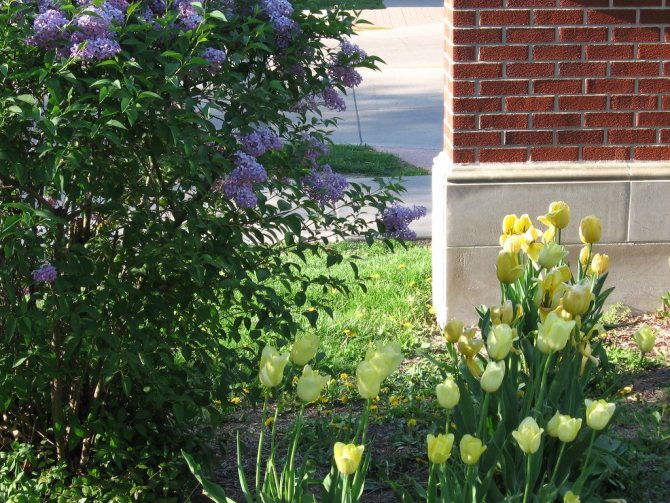

Tulips and lilacs. <>
Photo of yellow lilac
Top dressing
Amur lilacs need proper nutrition. Already in the second year, nitrogen fertilizers can be applied. This is usually done in the form of three feedings (50 grams per season). You can also use ammonium nitrate (70 grams).
The first feeding is carried out a month after the soil has thawed, the second and subsequent ones - after 3 weeks. Quite often, ash obtained from dried or cut branches is used as a complex fertilizer.
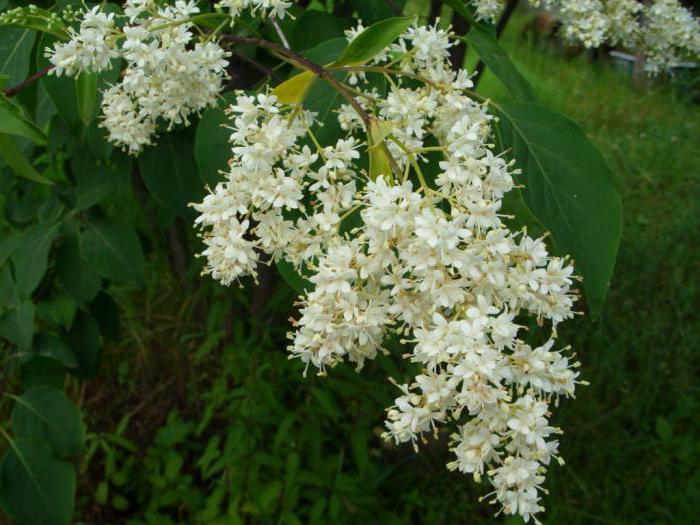

Planting dates and methods of growing
Despite its exoticism, buddleya can be grown in a garden. This can be done by:
- sowing seeds for growing seedlings;
- vegetation using young shoots or woody cuttings.
Sowing seeds and rooting cuttings are carried out in February. Already at the end of April or at the beginning of May, after the end of the frost, the seedlings are planted in open ground in a permanent place.
Rooting of young shoots is carried out in June-July directly in the garden, planting them immediately after cutting to a permanent place.


Pruning
They start pruning the tree when the lilac is three years old. At the same time, shoots are cut off, which go deeper into the crown. Branches that spread along the ground or grow downward are also removed.
Formative pruning is carried out in spring, and at the end of flowering, faded inflorescences are cut off. It is advisable to carry out spring pruning before the appearance of buds.
Pruning will give the shrub a beautiful and attractive appearance, and it is also an excellent stimulus for the development of new young shoots with buds.
Growing seedlings
Before sowing, the seed is recommended to be stratified, for which they are kept in a cold place for two weeks.
- The seedling container is drained, filled with a sand-peat mixture of neutral reaction and moistened.
- The seeds are mixed with sand, sown and sprayed with water.
- The container is covered with foil and placed in a room with a temperature of 20-24 ° C.
- The first shoots will appear in two to three weeks.
Further care consists of periodic airing of seedlings and spraying with water at intervals of every three days.
It is recommended to occasionally add potassium permanganate to the spray water to prevent blackleg formation.
When two or three leaves are formed, the seedlings dive and begin to harden, exposing them to the balcony or garden for several hours. When the seedlings are formed, they are planted in open ground.
Buddleya and the secrets of landscape design
The unpretentiousness and originality of this plant have received deserved recognition from flower growers, and buddeley has rightfully taken one of the main places in landscape design. With her participation, a wide variety of flower decor compositions are created:
- single planting of Black Knight or Harlequin shrubs on the lawn and lawn will emphasize the contrast of purple and violet shades of inflorescences against the background of green grasses;
- undersized Nanho Blue will serve as a beautiful edging of the recreation area;
- Medium-sized Adonis Blue will create a fragrant hedge adorned with blue buds;
- joint planting with flowering shrubs of spirea and Potentilla will colorfully decorate any corner of the garden;
- flower bed planting of bushes framed by astilba and thyme, phlox, marigolds and daisies, calendula and alpine poppies will create a natural picture of a natural bouquet.
Buddeley harmoniously fits into the decor of an alpine garden, is appropriate in English landscapes, brings a bright touch to the Art and Craft painting, is organic in a classic interior and adds a zest to the country style.
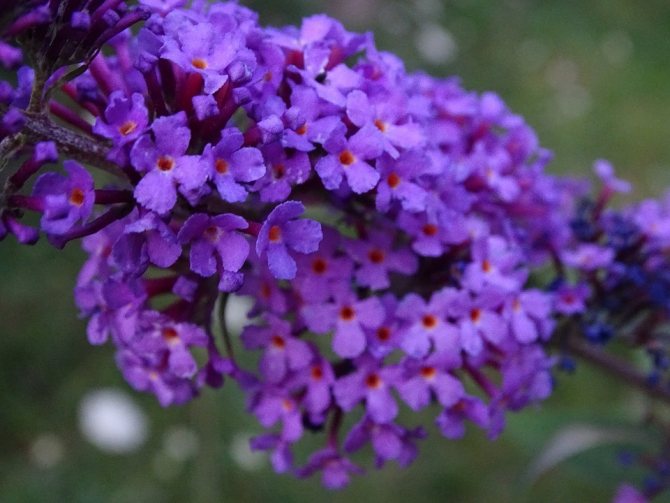

See photos of these varieties of lilac
Why is winged euonymus called winged? The answer is in the article.
Are you planning to plant thuja on the site? Check out our recommendations.


